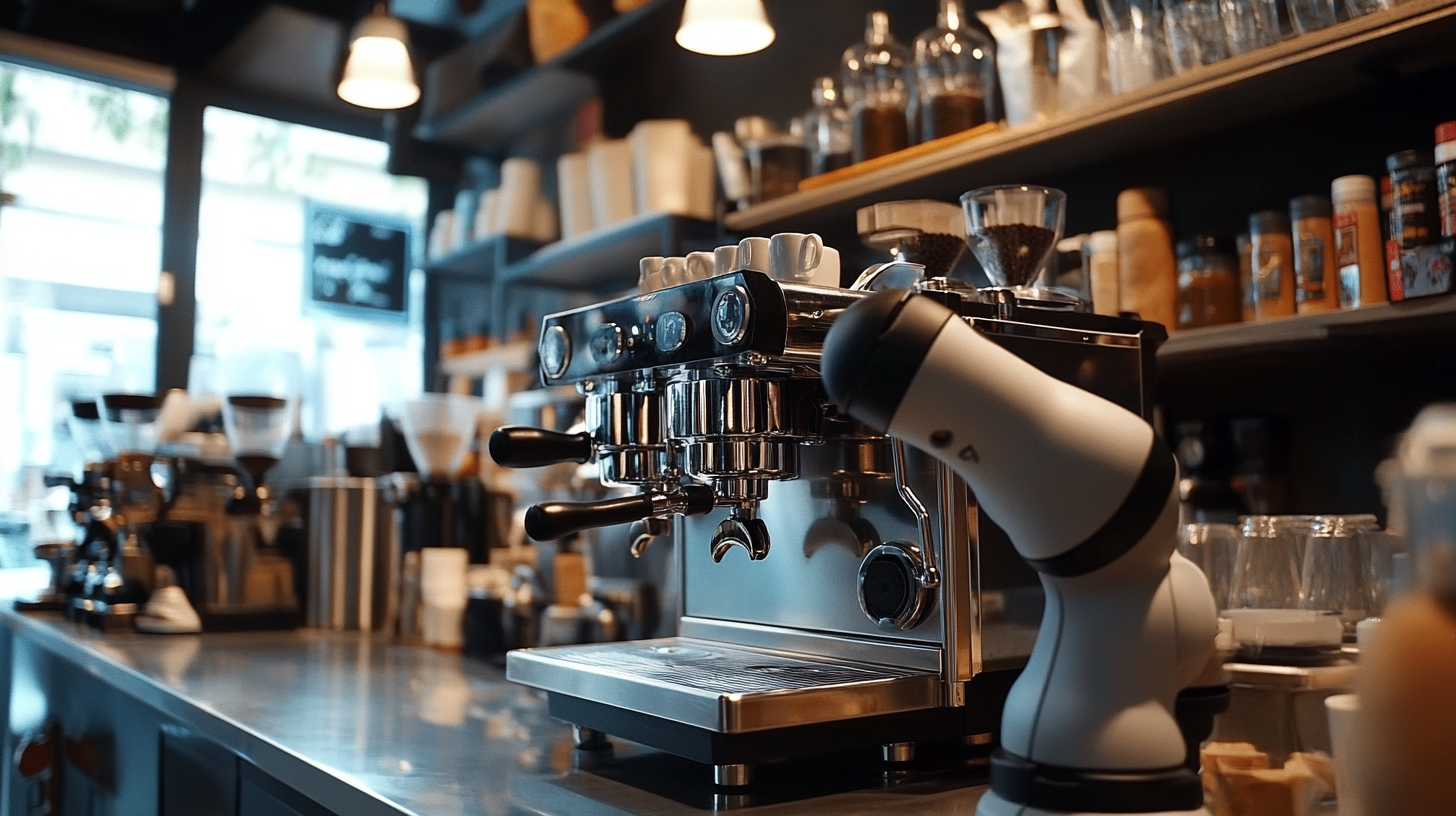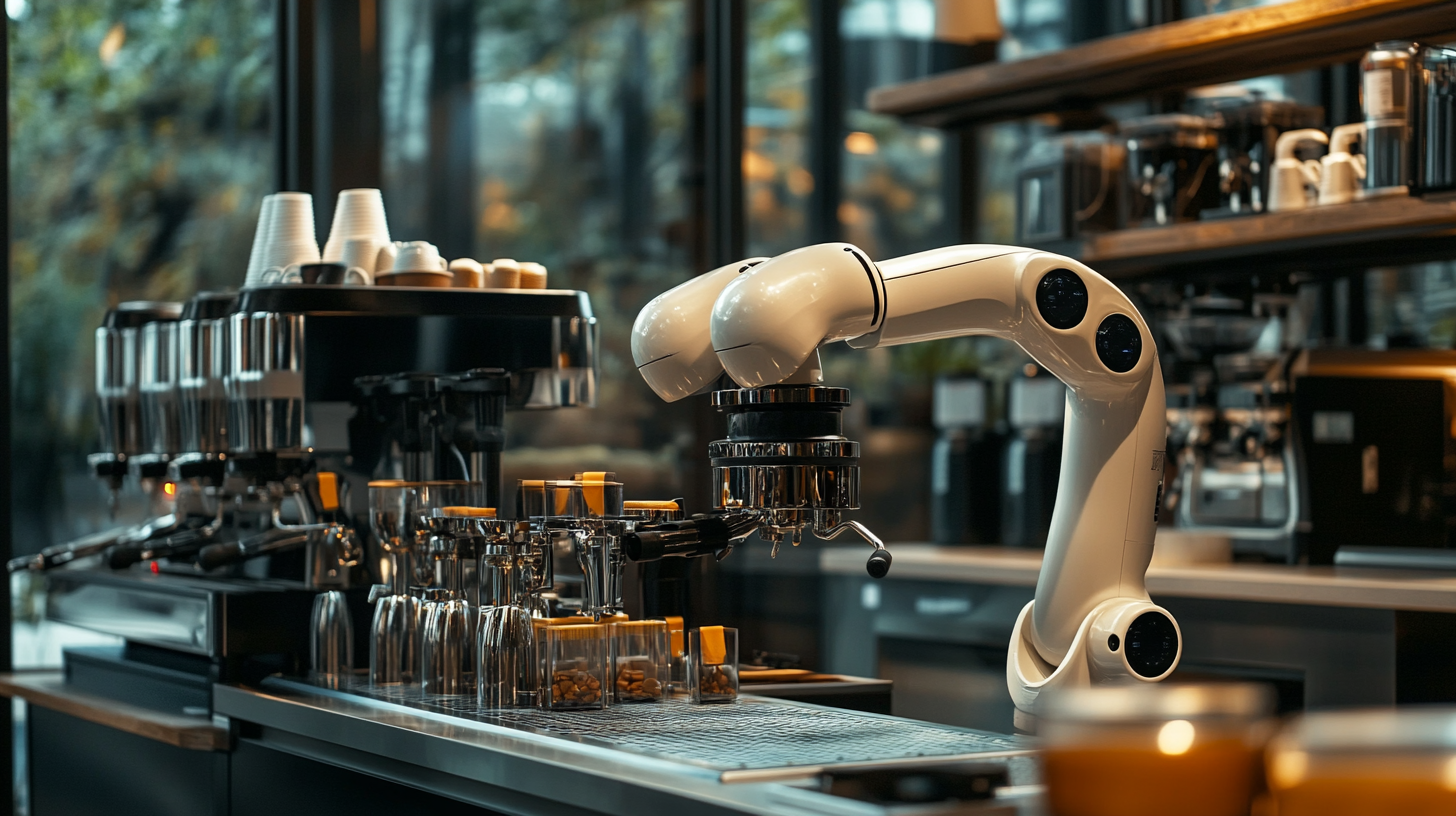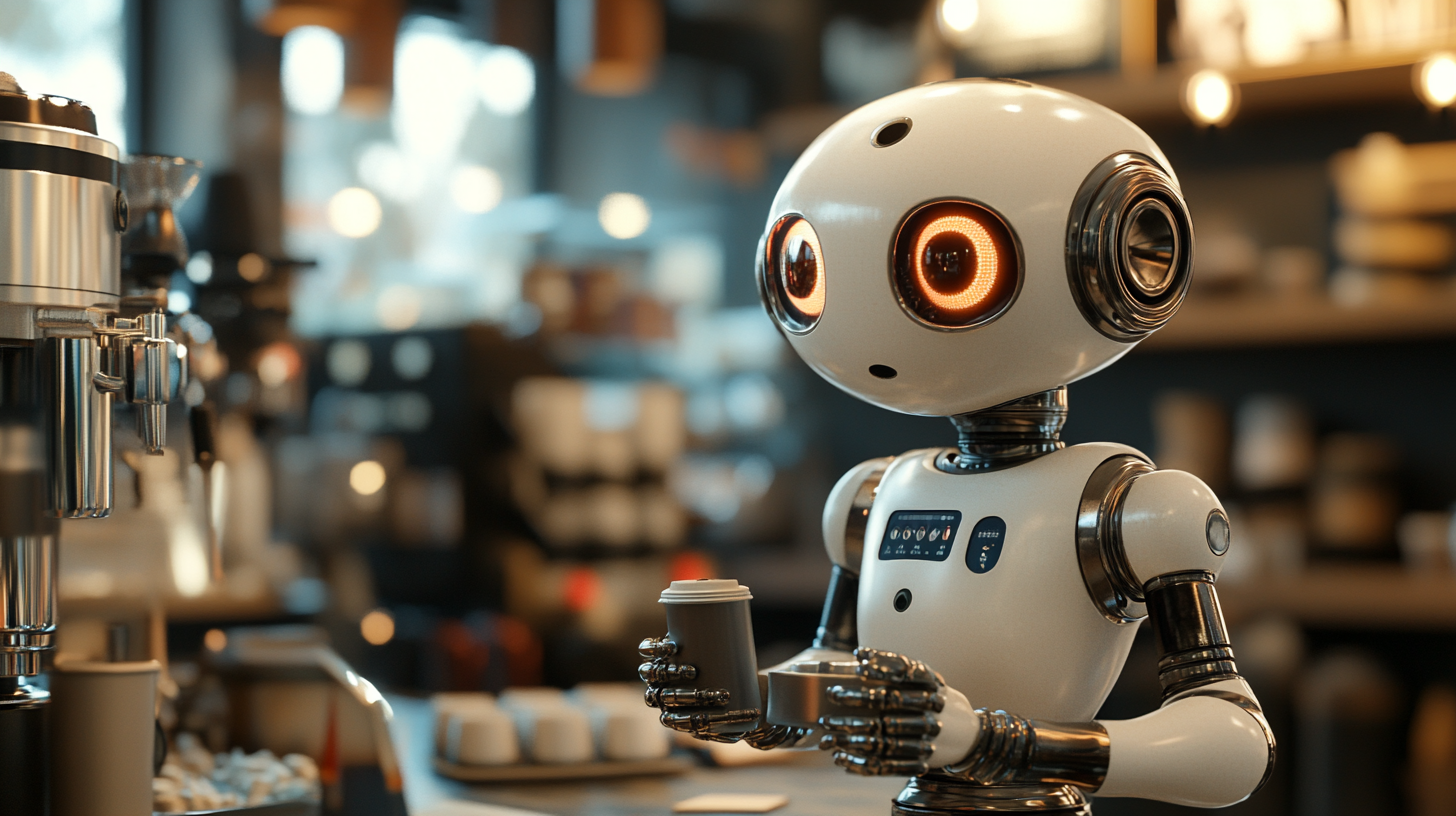Maximizing Profitability with Robot Coffee Shops Through Effective Maintenance Strategies
The rise of Robot Coffee Shops represents a significant shift in the coffee retail industry, merging technology and convenience to reshape consumer experiences. According to a report by IBISWorld, the coffee shop sector has seen a steady growth rate of 2.7% annually, reaching a market size of $45.4 billion in 2023. As robotics technology advances, many entrepreneurs are turning to automation to enhance operational efficiency and reduce labor costs. The integration of robots into coffee production and service not only offers an innovative solution to meet the growing demand for high-quality beverages but also ensures consistency and speed, which are critical in a competitive market.
However, the implementation of Robot Coffee Shops comes with its own set of challenges, primarily revolving around maintenance strategies. A study by Statista highlights that up to 30% of operational costs in automated businesses can be associated with equipment maintenance and downtime. Therefore, developing an effective maintenance strategy is crucial for maximizing the profitability of these establishments. By prioritizing preventive maintenance and utilizing data analytics to predict equipment failures, Robot Coffee Shops can enhance their reliability, reduce operational interruptions, and ultimately achieve higher profit margins in this rapidly evolving landscape.

The Importance of Regular Maintenance in Robot Coffee Shops
In recent years, robot coffee shops have been gaining traction as a viable business model in the coffee industry. The efficiency and speed offered by robotic technology have attracted a significant number of consumers, but to keep these high-tech establishments running smoothly, regular maintenance is crucial. According to a report by the International Society of Automation, neglecting maintenance can lead to operational downtime of up to 30%, potentially costing businesses dearly in lost revenue. Regular maintenance not only extends the lifespan of equipment but also ensures that the quality of the product remains consistent. Industry analyses show that businesses with a proactive maintenance strategy can reduce their equipment failure rates by 40%. This is particularly important in a coffee shop setting, where the speed of service directly impacts customer satisfaction and sales. Implementing a schedule for routine checks, software updates, and parts replacement can help avoid unplanned disruptions. Moreover, effective maintenance strategies can enhance the overall customer experience. With robots in charge of brewing, any malfunction can lead to long waits and unhappy customers. A study from the National Coffee Association indicates that 67% of consumers would be willing to pay a premium for beverages made by machines that are known for consistent performance. Therefore, investing in regular maintenance is not just a matter of keeping machines operational; it's also a means to maximize profitability and ensure customer loyalty in the evolving landscape of coffee retail.

Implementing Predictive Maintenance Techniques for Optimal Performance
The growing trend of implementing predictive maintenance techniques is transforming industries, particularly in sectors such as automated coffee shops and vehicle health monitoring. As businesses strive for maximized profitability, the integration of these techniques is proving to be vital. According to industry reports, the vehicle health monitoring market is projected to reach $27 billion in 2024, bolstered by a compound annual growth rate of 7.6% from 2025 to 2034. This growth will be propelled by increased usage of real-time vehicle diagnostic tools, highlighting the necessity for predictive maintenance strategies that leverage artificial intelligence.
In the realm of automated coffee shops, predictive maintenance can significantly enhance equipment uptime and reliability. Traditional maintenance approaches often rely on scheduled checks, which may not align with an asset's actual performance and condition. By integrating machine learning algorithms, businesses can monitor equipment in real-time, predicting potential failures before they occur. This proactive approach not only minimizes unexpected downtime but also reduces operational costs, leading to improved profitability.
Moreover, the shift towards intelligent infrastructure, as seen in recent advancements showcased at the Global Hybrid Cloud Infrastructure Summit 2024, emphasizes the importance of harnessing AI in maintenance processes. This convergence of AI technology with industry knowledge enables organizations to achieve a dual optimization of energy consumption and operational efficiency, particularly in the HVAC sector. As industries continue to embrace this paradigm shift, the role of predictive maintenance will undoubtedly be a cornerstone of future advancements, driving both performance and profitability.

Cost-Effective Solutions for Repair and Upkeep of Robotic Equipment
As the coffee shop industry evolves, the integration of robotic equipment is becoming increasingly popular for maximizing profitability. However, maintaining these robotic systems is crucial for ensuring their reliability and efficiency. According to a recent report by Research and Markets, the global coffee robotics market is projected to grow at a CAGR of 35% from 2021 to 2026, highlighting the increasing reliance on automation in this sector. To capitalize on this trend, businesses must implement cost-effective maintenance strategies to keep their robotic coffee machines in optimal condition.
One effective solution for upkeep involves predictive maintenance, which utilizes data analytics to forecast potential equipment failures before they occur. By leveraging sensors and IoT technology, coffee shops can monitor machine performance in real-time, reducing downtime and maintaining service quality. A study by McKinsey & Company found that predictive maintenance can lower maintenance costs by 10-40% and increase equipment lifespan significantly. With the proper analytics tools, coffee shop managers can not only streamline operations but also enhance their customer experience.
Training staff in basic troubleshooting and routine maintenance procedures is another cost-effective strategy. A National Institute of Standards and Technology report indicates that well-trained employees can reduce equipment failures by up to 30%, translating into substantial savings over time. Regularly scheduled maintenance checks, such as cleaning and software updates, paired with employee training, can contribute to the longevity and performance of robotic equipment, ultimately maximizing profitability for robot coffee shops.

Training Staff to Handle Maintenance and Troubleshooting
In the rapidly evolving landscape of robot coffee shops, effective staff training to manage maintenance and troubleshooting is paramount for maximizing profitability. Just as the water treatment industry emphasizes continuous skill enhancement due to advancements in technology, the same holds true for the operation of automated coffee systems. By investing in the education of team members, businesses can ensure that their staff not only understand the mechanics of the machines but also possess the problem-solving skills necessary to respond effectively when issues arise.
Moreover, as seen in various industries embracing Industry 4.0 technologies, staying ahead of the curve with maintenance strategies involves more than just routine check-ups. It requires a workforce adept at leveraging digital tools and analytical skills to diagnose and rectify problems swiftly. The integration of AI and real-time monitoring within coffee shop robots can streamline processes, but knowledgeable employees are essential to harness these innovations fully. Training programs designed to enhance technical understanding and operational efficiency will not only minimize downtime but also optimize service delivery, ultimately driving profitability in the robotic coffee sector.
Leveraging Data Analytics to Enhance Maintenance Strategies
In the rapidly evolving landscape of robot coffee shops, leveraging data analytics to enhance maintenance strategies is crucial for maximizing profitability. By adopting a digital twin framework for predictive maintenance, operators can significantly reduce downtime and operational costs. According to a report by McKinsey, predictive maintenance can lower maintenance costs by up to 30% and increase equipment lifespan by around 20%. This is especially relevant for robot coffee shops, where the seamless operation of machines is essential for maintaining service quality and customer satisfaction.
Utilizing data analytics allows business owners to monitor equipment performance in real-time, identifying potential issues before they escalate into costly repairs. A study published by the Institute of Electrical and Electronics Engineers (IEEE) highlights that businesses implementing predictive maintenance strategies experience a 10-20% increase in overall equipment effectiveness. With the integration of IoT devices, data is continually collected and analyzed, creating accurate digital twins of the equipment. This enables maintenance teams to make informed decisions, optimizing the servicing schedule based on actual usage patterns rather than arbitrary timeframes.
The benefits extend beyond just cost savings. Enhanced maintenance strategies through advanced analytics provide insights into customer preferences and trends, allowing coffee shops to adjust their offerings accordingly. As a result, not only do robot coffee shops improve their operational efficiency, but they also enhance their ability to deliver personalized customer experiences, positioning themselves competitively in a growing market.
